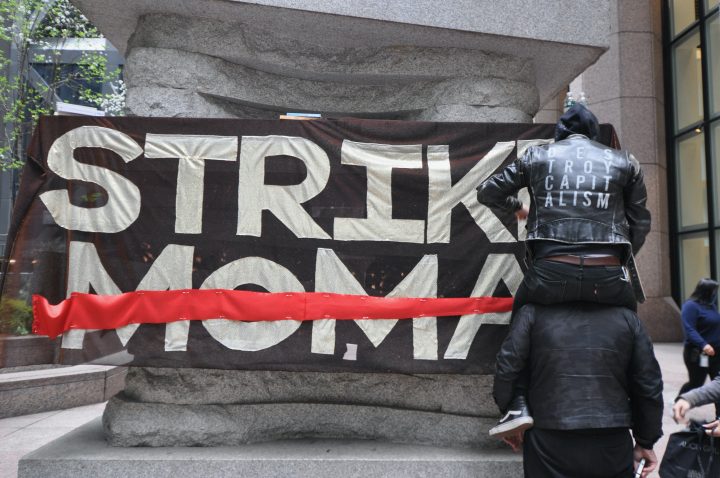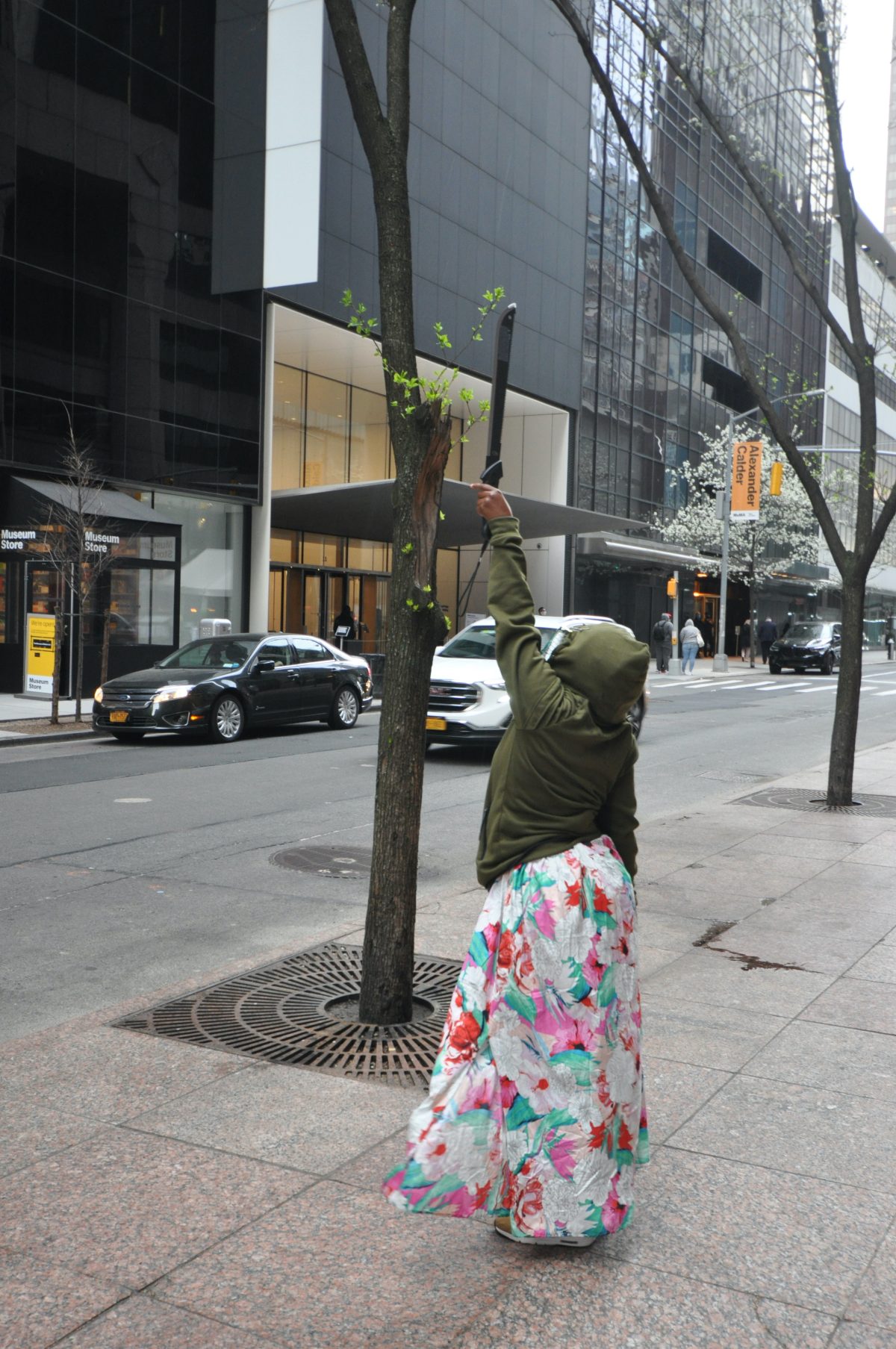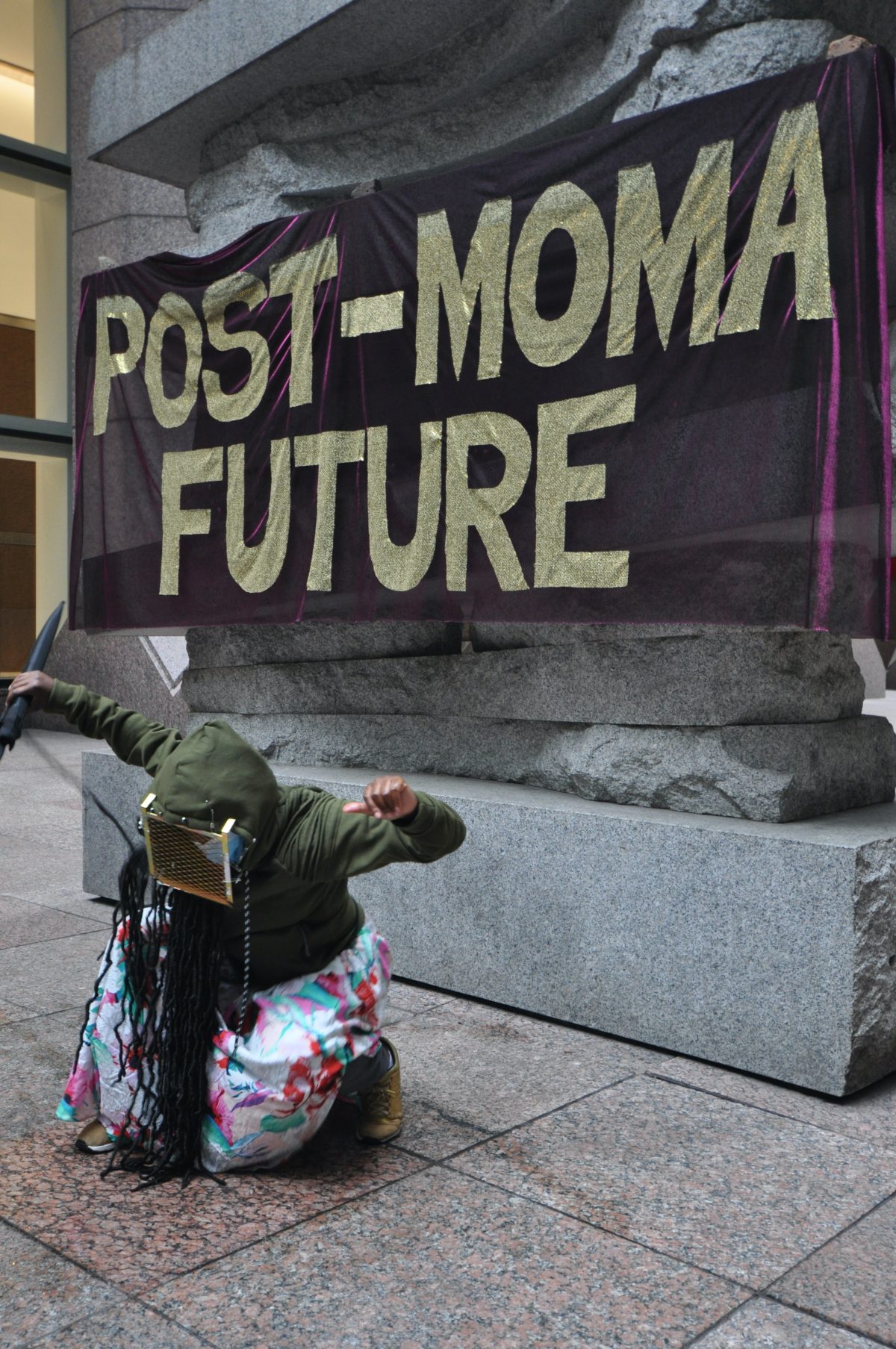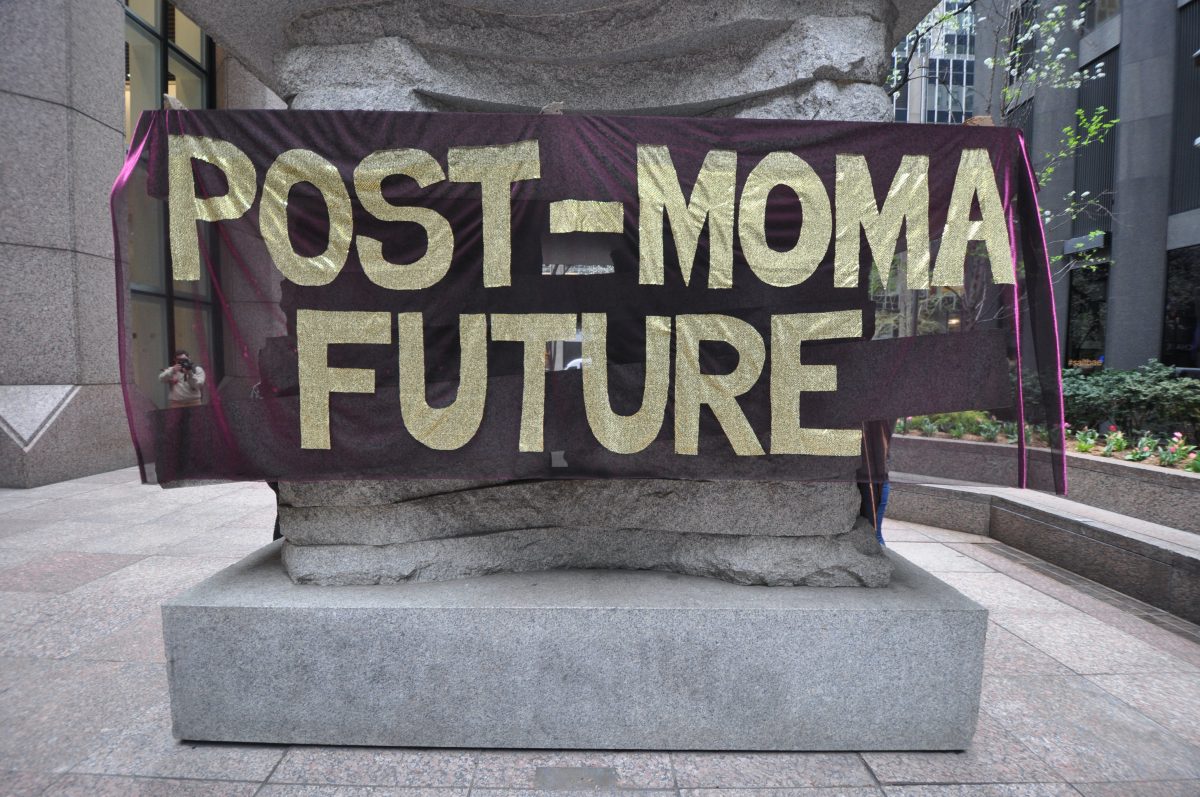
This afternoon, April 9, activist and performer Brittany Williams poured water from a bottle onto the floor of Manhattan’s Urban Plaza, across the street from the Museum of Modern Art, in a gesture of healing and acknowledgment of the Lenape land on which the plaza stands. Brandishing a machete, the co-founder of Get This War Dance then paced slowly towards MoMA’s building on West 53rd Street. Her face was covered with a metal mesh screen, evoking cage wire.
“Strike! It’s time, y’all,” Williams called on passersby in front of the museum. “This place right here represents colonialization, white supremacy, and the reason why our ancestors died. We say no more!”

That was the high point of a protest held today as part of the “Strike MoMA” campaign, organized by a new coalition of activists named the International Imagination of Anti-National Anti-Imperialist Feelings (IIAAF).
About 50 protesters, among them current and former MoMA workers, gathered at the plaza in front of the museum under drizzling rain. The protest kicked off what will be “10 Weeks of Art, Action, and Conversation,” running through June. According to the organizers, additional actions were held today in Chicago, the Dominican Republic, Haiti, and Greece.
For months, MoMA has been mired in controversy surrounding billionaire investor Leon Black, who recently recused himself as its chairman after hundreds of artists protested his former ties to sex offender Jeffrey Epstein. However, Black will remain a member of the board.

The IIAAF activists say that their goal is to reimagine MoMA as an institution untethered to billionaire donors engaged in predatory practices, hoping to usher in a “post-MoMA future.”
The protesters targeted several other MoMA trustees, including Larry Fink, Steven Tananbaum, Glenn Dubin, Steven Cohen, and Ronald Lauder. The activists have drawn attention to the trustees’ controversial political and financial histories, including alleged ties to Epstein and Donald Trump and business dealings related to vulture capitalism, environmental destruction, and mass incarceration.
“When we strike MoMA, we are allowing something else to emerge, something that allows care and generosity over property and profit,” one of the activists read from a statement. “Something controlled by workers, communities, and artists rather than death-dealing oligarchs who control it now.”

Two police cars that were stationed on 53rd Street at the beginning of the protest soon left the scene. The action proceeded without any clashes between the activists and the museum’s security.
“We are outside MoMA because MoMA exists outside of itself,” another speaker said. “It is more than an art museum. It is a spectacular node in a grid of power and capital extending through the city and the world.”
Khadeeja Majoka, a PhD Student at Columbia University, came to participate in the protest with two of her friends after seeing an announcement of the event on social media.
“The art world pretends to exist in a mystical isolation from class, race, and gender,” Majoka told Hyperallergic. “I’m hoping this would start a conversation,” she said about the protest. “Museums are the prime place where decolonization should happen. They’re built on such violence.”

Abou Farman, a member of the group MoMA Divest, said in an address: “Some of the most powerful men of the world sit on MoMA’s board. Their net worth over the last year has gone up exponentially while many people have lost their jobs, incomes, and lives.”
“People on that board make weapons; own mercenary companies that committed war crimes; have connections to sexual predators; and own companies that imprison people in cages,” Farman continued. “They come to the museum to wash their money and reputations. That’s the MoMA laundromat we’re looking at.”

In October of 2019, MoMA Divest and other groups crashed a VIP preview celebrating the museum’s redesign, calling on MoMA and Fink, CEO of BlackRock, to divest from private prison companies. Seven protesters were arrested later that month during a demonstration calling for the removal of Tananbaum, a hedge fund manager accused of profiting from Puerto Rico’s debt crisis.
“The problem goes beyond any one board member; the museum itself is the problem,” a member of IIAAF told Hyperallergic.
“MoMA needs to look different,” the activist continued. “It may not even look like a museum, but it needs to be a place for people, not for big money.”
The museum has not yet responded to Hyperallergic’s request for comment.
0 Commentaires